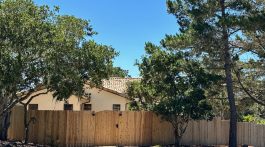Is it really surprising that, San Francisco, this beautiful, much loved, much visited, much photographed city is a world destination? Its stunning Bayside location, The Golden Gate Bridge, The Palace of Fine Arts, Alcatraz, Lombard Street and the cable cars to name but a few of its unique treasures.
The iconic Golden Gate Bridge, majestically spanning the entrance to the Bay, links the city to the northern headlands. Opened to vehicles on May 28th 1937 it took just 4 years to build and until New York City’s Verrazano Narrows Bridge was opened on November 21, 1964, it was the longest span in the world at 4,200 foot. Today the Akashi-Kaikyo Bridge in Japan (at 6,532 feet) holds the record. Named after ‘The Golden Gate Strait’, the entrance to the San Francisco Bay from the Pacific Ocean, it was painted its distinctive orange vermilion, deemed “International Orange”. Architect Irving Morrow felt this colour blended best with the bridge’s natural setting. It was also considered to provide enhanced visibility for passing ships.
The Palace of Fine Arts, designed by architect Bernard Maybeck, built on 635 acres reclaimed from San Francisco Bay was opened on February 20, 1915. It was built to house the 20th century’s first great world’s fair and to demonstrate to the world that San Francisco had risen from the ashes following the devastation of the 1906 earthquake. The exposition, a resounding success, ended long ago, but the Palace has lived on as the last, beloved and treasured reminder of a great gathering that welcomed the world back to San Francisco.

In stark contract to the Palace, close by in the chilly waters of the Bay, sits Alcatraz Island, former home of the infamous federal prison from 1933 until 1963. Often referred to as ‘The Rock’, the small island was originally a light house and then a military fortification. Today it is a National Historic Landmark with visitors flocking to revisit its grim past.
 A ride through San Francisco wouldn’t be complete without navigating the most crooked street in the world, Lombard Street. 8 twisting turns down the red brick paved ¼ mile stretch between Russian Hill, Hyde and Leavenworth Streets. The street’s design dates from 1922 when Carl Henry, a local property owner, suggested it to allow vehicles to travel its natural 27% grade.
A ride through San Francisco wouldn’t be complete without navigating the most crooked street in the world, Lombard Street. 8 twisting turns down the red brick paved ¼ mile stretch between Russian Hill, Hyde and Leavenworth Streets. The street’s design dates from 1922 when Carl Henry, a local property owner, suggested it to allow vehicles to travel its natural 27% grade.
Today tourists hope to catch a glimpse of the cable car before they cruise down its tight curves at a ‘racing speed’ of 5 miles an hour!

At the bottom of the hill the next sight is Coit Tower and then the TransAmerica building


Finally the skyscrapers loom tall and gleaming, reminiscent of many north American cities
Download the San Francisco Travel Guide suggestions for where to stay, where to eat and what not to miss!






No Comment